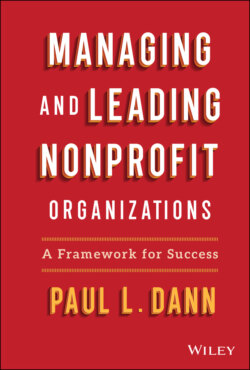Читать книгу Managing and Leading Nonprofit Organizations - Paul L. Dann - Страница 15
Eighth Practice Perspective: Hero Leadership versus Leading Heroes
ОглавлениеThe eighth and final perspective that I recommend you take on is one more antigravitational effort that possesses enough in the way of dynamic layers to argue that it too meets the definition of simplexity. As you develop your leadership practice for yourself, your team, and your organization, be sure to take a stance that moves against the cultural grain of creating the lone hero leader. Instead, be sure to create heroes at all levels of the organization. Resist the urge to become a hero leader and ensure that each of your team members feels celebrated as a hero for their contribution to the organization's mission and vision.
If you allow yourself to become the hero leader, then, by definition, you will exclude others from having the ability to share in leadership practice. When a team member feels that there is no room for them to play an important role there is a natural tendency for them to stand down rather than take on leadership behavior and engage in action that helps to buoy the work of the organization. Celebrate all the team member contributions and work to give credit away to those who are working on the team. By taking this stance you support the very fabric of your team's commitment and engagement. Grabbing the glory for oneself feels wonderful in the moment, but sadly squanders the value that can come from team members feeling that their contribution has made a difference. It is essential that each team member feels that they, too, can be a leader and have a role to play in helping to advance the organization.
By creating heroes across the organization, you also build your team's capacity to be engaged and responsive to the needs of the organization. Nonprofit organizations that enhance successful leadership practice across and within the organization are agencies that become resilient and find that they are well equipped to be successful in the face of any challenges that occur.
Each of the eight practice perspectives can help you to develop your own efficacy as a leader. In the Appendix of this book, you will find a tool for conducting a self‐assessment of your abilities in each of the practice perspectives. The tool, in addition to helping you conduct a self‐assessment, also makes it possible for you to thoughtfully develop strategies to advance your scoring and ultimately your capabilities in each of the areas. Once you have gone through and scored yourself, take some time to identify specific steps that you will take to heighten your skills within each practice perspective. I recommend using your assessment as a working document and revisiting it from time to time to see how your practice perspectives are developing.
Another option for the use of this tool is to work with your team to have each team member complete an assessment. Once everyone has completed their assessment, take time to share as a group where each individual scores. What strengths do they have and where are the areas for growth? What are some of the strategies that everyone has come up with to move their practice perspectives forward? Often working together as a team on practice perspectives can help leverage your group's ability to exercise collective leadership skills. As a group you will develop a greater understanding of everyone's strengths, how they contribute effectively to the team, and where the areas for growth lie. Most teams quickly realize that they can complement each other and help to support their colleagues as they work to advance their leadership practice.
